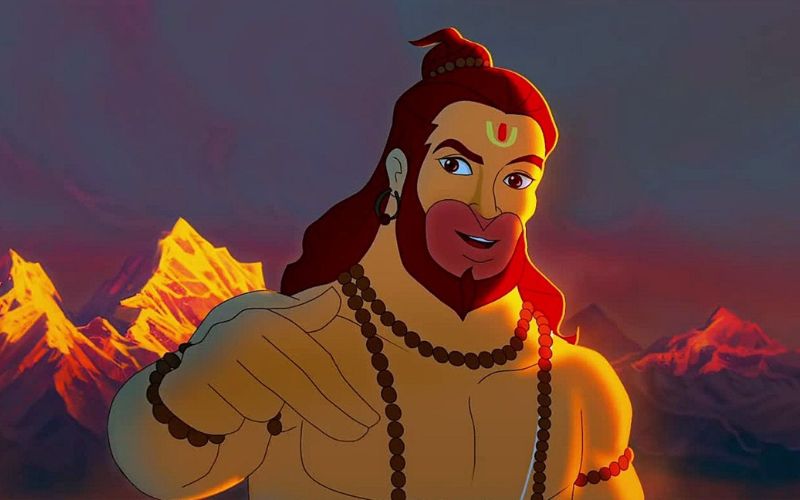Hanuman, one of the most revered deities in Hindu mythology, symbolizes strength, devotion, and loyalty. He is a central figure in the epic Ramayana and is worshipped widely across India and beyond. The art and images of Hanuman have evolved over centuries, reflecting various cultural, religious, and artistic influences. This article delves into the significance, evolution, and impact of Hanuman images in art.
The Origin and Mythological Background
Hanuman is the son of Anjana and Kesari and is also considered the son of the wind god, Vayu, due to his extraordinary powers. He is a devoted follower of Lord Rama and played a crucial role in the Ramayana, particularly in the battle against the demon king Ravana. Hanuman’s deeds, strength, and devotion make him an enduring symbol of righteousness and spiritual power.
Iconography of Hanuman
Hanuman is typically depicted as a monkey-faced deity with a muscular human body, often shown holding a mace (gada) and sometimes carrying a mountain. The traditional iconography portrays Hanuman in various forms, each symbolizing different aspects of his divine nature.
- Standing Hanuman: In this pose, Hanuman is depicted standing tall, with a mace resting on his shoulder. This form represents his strength and readiness for battle. The image often shows Hanuman with a serene yet powerful expression, symbolizing the calmness that comes with inner strength.
- Flying Hanuman: One of the most iconic images of Hanuman is him flying, carrying the Dronagiri mountain. This scene is from the Ramayana when Hanuman brings the mountain that holds the life-saving herb, Sanjeevani, to save Lakshmana’s life. This image symbolizes his unwavering dedication and ability to overcome any obstacle to serve Lord Rama.
- Hanuman Tearing Open His Chest: In this powerful depiction, Hanuman is shown tearing open his chest to reveal the image of Lord Rama and Sita in his heart. This form is the ultimate expression of his devotion, illustrating that his heart belongs entirely to his lord.
- Panchamukhi Hanuman: The five-faced form of Hanuman is a lesser-known yet significant representation. Each of the five faces—Hanuman, Narasimha, Garuda, Varaha, and Hayagriva—symbolizes different divine powers and attributes. This image is particularly revered for its protective qualities and is often used in rituals and worship.
- Meditating Hanuman: Another form that has gained popularity is the meditative Hanuman, where he is depicted sitting in a yogic posture, deep in meditation. This image emphasizes his spiritual side, reflecting the balance between his physical strength and inner tranquility.
Evolution of Hanuman Art
The depiction of Hanuman has evolved over centuries, influenced by various artistic styles, regional traditions, and religious movements.
- Early Depictions: The earliest images of Hanuman date back to ancient temples and sculptures in India. These early depictions were primarily in stone, with simple, powerful forms that emphasized his physical strength. The early art often portrayed him as a warrior, with an emphasis on his role in the Ramayana.
- Medieval Period: During the medieval period, Hanuman’s images became more detailed and ornate. The influence of various regional styles, such as the Chola, Vijayanagara, and Mughal art, can be seen in the sculptures and paintings of this era. The medieval period also saw the rise of Bhakti (devotional) movements, which led to an increased emphasis on Hanuman’s role as a devotee of Lord Rama. This shift is reflected in the art, with more focus on his expressions of devotion and service.
- Colonial Influence: The colonial period brought new influences to Hanuman’s art. The British and other European colonizers introduced new artistic techniques and materials, leading to a fusion of traditional and Western styles. During this time, Hanuman began to be depicted in prints and posters, making his images more accessible to the masses. The introduction of lithography allowed for mass production of Hanuman images, which became popular in homes and temples across India.
- Modern and Contemporary Art: In modern times, Hanuman’s images have taken on new forms, influenced by contemporary art movements and global culture. Artists have experimented with different media, including digital art, to create innovative and dynamic representations of Hanuman. The modern depictions often blend traditional iconography with contemporary aesthetics, making Hanuman relevant to the present day while preserving his timeless qualities.
Symbolism in Hanuman Images
Hanuman’s images are rich in symbolism, each element carrying deep spiritual significance.
- Mace (Gada): The mace symbolizes Hanuman’s strength and his role as a protector. It is a common attribute in many of his images, representing his ability to overcome evil and protect the righteous.
- Flying Pose: The flying Hanuman is a symbol of his ability to transcend physical limitations. It represents his determination and the power of devotion to overcome any obstacle.
- Tearing Open the Chest: This image is a profound symbol of bhakti (devotion). It conveys the message that true devotion comes from the heart and that a devotee’s love for the divine is pure and selfless.
- Five Faces (Panchamukhi): The five faces of Panchamukhi Hanuman represent the five elements and the five directions, symbolizing his mastery over them. Each face also represents different aspects of his divine nature, such as protection, courage, and knowledge.
- Meditation: The meditative Hanuman is a symbol of inner peace and spiritual discipline. It emphasizes the importance of balancing physical strength with mental and spiritual tranquility.
Cultural Impact of Hanuman Images
Hanuman’s images have had a profound impact on Indian culture and beyond. His iconography is not only central to religious worship but also plays a significant role in art, literature, and popular culture.
- Religious Worship: Hanuman is worshipped across India, and his images are a central part of religious rituals and practices. Temples dedicated to Hanuman can be found in almost every region, and his images are often placed in homes and vehicles for protection. The worship of Hanuman transcends regional and linguistic boundaries, making him a unifying figure in Indian spirituality.
- Festivals: Hanuman’s images are prominently displayed during festivals such as Hanuman Jayanti, which celebrates his birth. These festivals often feature processions where large images or statues of Hanuman are paraded through the streets, accompanied by music, dance, and prayers.
- Literature and Performing Arts: Hanuman’s character and images have inspired countless works of literature, poetry, and performing arts. His story is central to various adaptations of the Ramayana, including plays, dance dramas, and films. The imagery of Hanuman tearing open his chest or flying with the mountain is often depicted in these performances, reinforcing his cultural significance.
- Popular Culture: In contemporary times, Hanuman has found a place in popular culture, particularly in comic books, animated series, and films. These modern interpretations often present Hanuman as a superhero, blending traditional iconography with modern storytelling. His images in these media continue to inspire and resonate with younger generations.
- Global Influence: The influence of Hanuman’s images has also spread beyond India. In Southeast Asia, particularly in countries like Indonesia, Thailand, and Cambodia, Hanuman is revered, and his images can be found in temples and cultural monuments. The spread of Hinduism and Indian culture through migration and trade has contributed to the global recognition of Hanuman’s iconography.
Conclusion
The images of Hanuman are a testament to the enduring power of his character and the universal values he represents. From ancient sculptures to modern digital art, Hanuman’s depictions have evolved, reflecting the changing cultural, religious, and artistic landscapes. Yet, at the core of every image is the timeless message of strength, devotion, and righteousness.
Hanuman’s images continue to inspire millions, serving as a reminder of the power of faith and the importance of inner strength. Whether in a temple, a festival, or a modern art gallery, the image of Hanuman stands as a symbol of the eternal struggle between good and evil, and the triumph of devotion over all obstacles.



